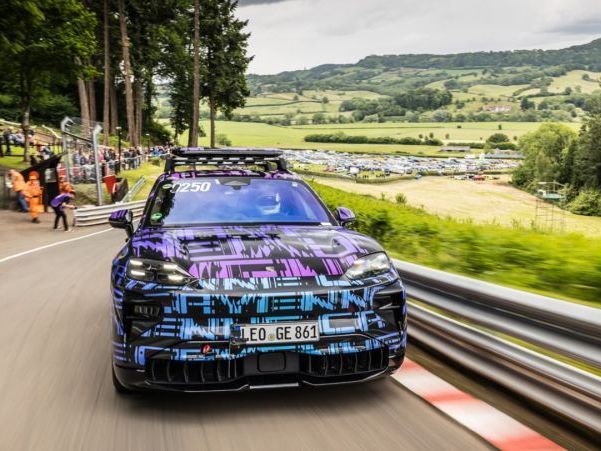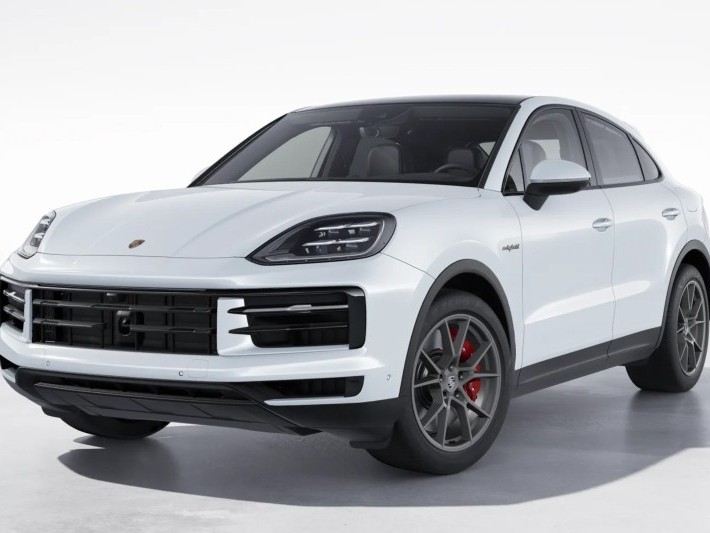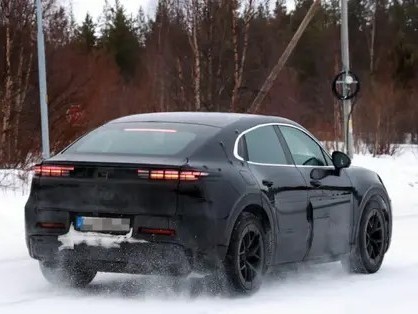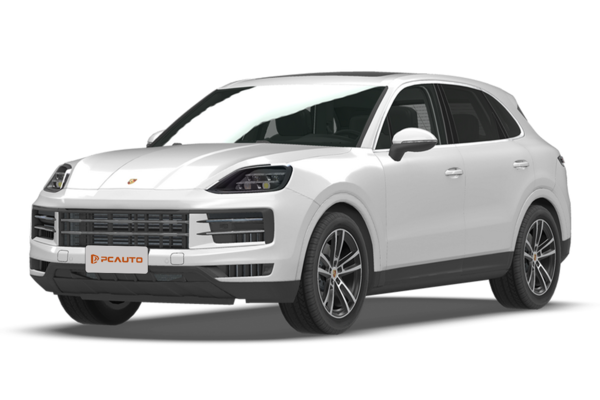Q
What is the Top Speed of Porsche Cayenne? Let's Learn Its Max Speed
As a high-performance luxury SUV, the top speed of the Porsche Cayenne varies depending on the model. Take the latest Cayenne Turbo GT as an example. Its top speed can reach 300 km/h, and it can accelerate from 0 to 100 km/h in just 3.3 seconds, demonstrating powerful performance. This is thanks to its 4.0-liter V8 twin-turbocharged engine, which can output a strong 640 horsepower. For car enthusiasts in Malaysia, the Cayenne is not only suitable for daily driving but also allows them to experience the thrill of high speed on the highway. At the same time, its chassis tuning and air suspension system ensure stability and comfort during high-speed driving. It's worth mentioning that although the Cayenne has excellent performance, drivers still need to comply with speed limits on Malaysian roads to ensure safety. In addition, the Cayenne is also equipped with advanced driving assistance systems, such as adaptive cruise control and lane-keeping assist, which further enhance the convenience and safety of long-distance driving. These features are very practical for Malaysian users who often drive on the North-South Expressway.
Special Disclaimer: This content is published by users and does not represent the views or position of PCauto.
Related Q&A
Q
Is a Porsche Cayenne good for long drive?
The Porsche Cayenne stands out as a luxury SUV that truly excels on long drives, making it a perfect fit for Malaysia's roads and climate. Under the hood, its efficient turbocharged engine paired with the 8-speed Tiptronic S transmission delivers smooth power delivery and decent fuel economy, keeping things quiet and comfortable even when cruising at highway speeds. The standard air suspension system automatically adjusts damping based on road conditions, taking long-distance comfort up another notch.
What really helps on those extended journeys is the Cayenne's ergonomic seat design, which minimizes fatigue during hours behind the wheel. Throw in advanced driver assists like adaptive cruise control and lane-keeping, and it's clear this SUV is built to reduce the strain of long drives. For Malaysian drivers, the Cayenne's air-con system is a beast—blasting cold air fast enough to tackle our tropical heat with ease. The generous fuel tank also means fewer stops at the pump, which is a big plus on those highway stretches.
Space-wise, the Cayenne doesn't disappoint either. Rear legroom and boot capacity are class-leading, easily swallowing all the luggage for a family trip. If you're watching fuel costs, the hybrid variant ups the efficiency game even more. Sure, luxury car maintenance isn't cheap, but Porsche's service network in Malaysia is solid, giving owners peace of mind. All things considered, if you're someone who regularly hits the North-South Expressway, the Cayenne is definitely worth a spot on your shortlist.
Q
When did Porsche stop making Cayenne?
The Porsche Cayenne, the brand's luxury SUV, is still in production and going strong. The current iteration is the third generation (codenamed PO536), which received a mid - cycle refresh in 2023. This update brought with it a revised plug - in hybrid system and a brand - new interior design. In the Malaysian market, the Cayenne has long been a top pick among high - performance SUVs. Local buyers can choose from a variety of powertrains, including the 3.0T V6, 2.9T twin - turbo V6, and the range - topping 4.0T V8. For those who desire a sportier look, the Coupe variant is also available. Porsche is steadily ramping up its electrification efforts in Southeast Asia, and Malaysian customers should keep an eye on the Cayenne E - Hybrid. With an electric - only range of 80 kilometers (WLTP), it's well suited for daily city driving. Thanks to the Malaysian government's ongoing tax incentives for hybrid vehicles, these electrified versions are highly cost - effective. For the latest specs and pricing, it's always best to check directly with official Porsche channels.
Q
What engine is in the Cayenne 2025?
The 2025 Porsche Cayenne hits the Malaysian market with a solid lineup of powertrains to suit different tastes. There's the efficient 3.0-liter V6 turbo kicking out 353 horsepower, a beefier 2.9-liter V6 twin-turbo in the Cayenne S good for 474 horses, and at the top of the heap, the 4.0-liter V8 twin-turbo in the Cayenne Turbo GT that cranks out a whopping 631 hp. Then there are the plug-in hybrid options, like the Cayenne E-Hybrid, which pair either a 2.0-liter or 3.0-liter engine with an electric motor for a greener drive. These PHEVs offer around 40-60 km of all-electric range, making them pretty ideal for Malaysian city commutes. All these engines are mated to an 8-speed Tiptronic S transmission, ensuring smooth shifts and decent fuel economy. What's cool about Porsche's engine tech here is how it balances performance and efficiency. The V8, for example, uses cylinder deactivation, automatically switching to four-cylinder mode under light loads to save fuel. And the hybrids, of course, let you cruise on pure electric to cut down on emissions. For Malaysian buyers, it really comes down to daily needs. If you're often hitting the highway or crave that sporty feel, the V6 or V8 versions are the way to go. But if you're big on eco-friendliness and fuel efficiency, the hybrid models should be right up your alley.
Q
What is the battery in the Porsche Cayenne 2025?
The 2025 Porsche Cayenne is expected to come equipped with advanced lithium-ion battery packs, though exact specs will likely vary depending on the trim—think base, plug-in hybrid, or high-performance models. Your standard gas-powered Cayenne will stick with the tried-and-true 12V AGM battery, but the plug-in hybrid variants are where things get interesting, packing higher-voltage lithium-ion units to power that electric motor.
Now, a heads-up for Malaysian drivers: our tropical heat can be tough on batteries. The high temps tend to speed up electrolyte evaporation, so make it a habit to check your battery's condition regularly. And when it comes time for replacements, stick with Porsche OEM parts—trust me, compatibility is key here.
Porsche's smart energy management system is a solid plus too; it optimizes charging and discharging to help squeeze more life out of that battery. If you're eyeing the hybrid, expect a bump in all-electric range compared to the previous gen, but remember, real-world numbers will hinge on local road conditions and how you drive—stop-and-go city traffic versus highway cruising makes a big difference.
For battery care, avoid leaving the car parked for super long stretches until it's drained; that's a quick way to kill a battery. And don't sleep on those preventive checks at your Porsche service center—their diagnostic tools can catch issues before they turn into headaches. Keep these tips in mind, and your Cayenne's battery should stay in the game for the long haul.
Q
Will there be a 2025 Porsche Cayman?
From what we're hearing, Porsche is indeed gearing up to launch an all-new Cayman in 2025 as part of its broader electrification strategy. Word on the street is this new model will likely ditch the combustion engine in favor of a pure electric powertrain, staying true to the 718 lineage's sports car DNA while cranking up the performance and tech to meet global demand for high-performance electric sports cars.
For Malaysian enthusiasts, there's a good chance this EV Cayman will make its way here through official channels. However, we'll have to wait for Porsche Asia Pacific to confirm exact launch timings and local specifications.
What's really exciting is that Porsche isn't starting from scratch with EVs. They've already racked up plenty of experience with the Taycan and the upcoming electric Macan, so expectations are high for this electric Cayman – especially when it comes to range figures and fast-charging capabilities, which could be pretty impressive.
Malaysian buyers should keep an eye on updates from their local Porsche centers. It's also worth watching how government EV policies shape up – things like import tax breaks or improvements to charging infrastructure could have a real impact on both the car's final price tag and how practical it is to live with.
Q
What's the fastest 2025 Porsche?
The fastest Porsche model of 2025 is the all-new Taycan Turbo S. This pure electric sports car, armed with its potent dual-motor all-wheel-drive setup, cranks out a whopping 1,000 horsepower in overboost mode. It rockets from 0-100 km/h in a mere 2.3 seconds and tops out at 320 km/h, making it Porsche's quickest production car to date.
Under the skin, the Taycan Turbo S packs an advanced 800V high-voltage battery system. It's not just about brute force, though – this thing supports 270 kW fast charging, meaning you can get around 400 km of range in just 15 minutes. Perfect for those long hauls up and down Malaysia's North-South Expressway.
What's really impressive is how Porsche's EV tech innovation lets it deliver mind-blowing performance without sacrificing everyday usability. Take the adaptive air suspension, for example – it automatically adjusts to the road conditions, ensuring a comfortable ride no matter what Malaysian roads throw at it.
For speed-craving Malaysian Porsche fans, the Taycan Turbo S isn't just a statement of Porsche's performance prowess in the electric age; it's a glimpse into the future of supercars. And to sweeten the deal, Porsche Centre Malaysia offers exclusive charging networks and after-sales service, so owners can hit the road with total peace of mind.
Q
What's the cost of a 2025 Porsche?
Porsche hasn't officially announced their 2025 model prices for Malaysia just yet, but we can get a ballpark figure by looking at the 2024 lineup. For example, the entry-level Macan is expected to start around RM400,000, while the 911 Carrera will likely push north of RM900,000. Of course, the final number will dance around a bit depending on the specific trim, the options you tick, and even currency exchange rates.
Let's not forget, in Malaysia, imported car prices typically bundle in duties, sales tax, and registration fees – these can add a pretty penny to the sticker price. If you're seriously considering one, your best bet is to keep an eye on Porsche Malaysia's official website or hook up with an authorized dealer to get the most accurate quote.
Porsche's reputation is built on that legendary driving feel and top-notch interiors. Whether you're looking at the SUVs like the Cayenne and Macan, the iconic 911 sports cars, or even the all-electric Taycan, they all blend cutting-edge tech with that timeless Porsche design language. Malaysia's tropical weather and mixed road conditions can be tough on cars, but Porsche's all-wheel-drive systems and adaptive suspension setups handle it like a champ. Plus, their after-sales service network covers all the major cities, so you can have peace of mind knowing support is there when you need it.
Q
How much should I pay for a 2025 Porsche Cayenne?
Pricing for the 2025 Porsche Cayenne in Malaysia is expected to vary depending on configuration and optional extras. Looking at the current Cayenne, which starts roughly between RM600,000 and RM700,000 before any added options, the new model might see slight adjustments due to exchange rates, import duties, and equipment upgrades. Your best bet for the latest figures is to reach out directly to authorized Porsche dealers in Malaysia, like Porsche Centre Kuala Lumpur or Johor Bahru. With luxury cars, custom options—think wheels, interior materials, or driver assistance systems—can really swing the final price tag, so dealerships will have the most accurate breakdown for your build.
A big factor keeping Cayenne prices on the higher side in Malaysia is the import duty structure, which can add up to 30-50% to the car's cost when you factor in tariffs, consumption tax, and sales tax. If you're planning to hold onto your Cayenne for the long haul, it's worth checking out Porsche Malaysia's official warranty coverage—typically 5 years with unlimited mileage—and their service packages. These can be smart investments to help manage long-term maintenance costs.
Sure, rivals like the BMW X5 or Mercedes-Benz GLE might come in with slightly lower price tags in the Malaysian market, but Porsche's brand cachet and the sheer driving dynamics it delivers remain the Cayenne's stand-out strengths.
Q
What transmission is in the 2025 Porsche Cayenne?
The 2025 Porsche Cayenne offers Malaysian buyers a variety of transmission options, each tailored to specific models and powertrains. The base Cayenne and Cayenne S are expected to feature the refined 8-speed Tiptronic S automatic transmission, celebrated for its smooth shifts and quick reflexes—striking that perfect balance between daily comfort and spirited performance. Step up to the high-performance Cayenne Turbo GT, and you'll likely find the more aggressive 8-speed PDK dual-clutch gearbox under the hood, engineered specifically for handling massive torque and delivering lightning-fast shift times. For the plug-in hybrids, like the Cayenne E-Hybrid, Porsche fits an 8-speed automatic transmission specially tuned for the hybrid system, maximizing the synergy between electric and combustion power for optimal efficiency.
For Malaysian consumers, Porsche's transmission tech doesn't just prioritize driving thrills; it's also built to withstand our tropical climate. Think beefed-up cooling systems and enhanced sealing to keep things running smoothly when the mercury rises. If you're in the market, pick based on your driving style: the Tiptronic S is your go-to for relaxed, comfortable commutes, while the PDK will appeal to those craving that track-inspired edge. And regardless of which you choose, all transmissions come with Porsche's "Sport Response" mode, giving you an instant boost in power delivery—perfect for attacking Malaysia's twisty backroads or cruising confidently on the highway.
Q
What is the range of the 2025 Cayenne Hybrid?
The 2025 Cayenne Hybrid is expected to deliver an all-electric range of 60 to 80 kilometers, though actual figures may vary based on driving conditions, battery state, and vehicle specifications. This plug-in hybrid model pairs a 3.0-liter V6 turbocharged engine with an electric motor, churning out a combined system output of around 460 horsepower—making it equally adept at city commutes and longer journeys. For Malaysian buyers, its fuel efficiency translates to noticeable savings at the pump, especially handy for navigating traffic-heavy cities like Kuala Lumpur. What’s notable is that plug-in hybrids in Malaysia qualify for tax incentives, including import duty and sales tax exemptions, plus subsidies for home charging installation. If you’re mostly doing short trips, lean into electric mode to maximize savings, and keeping up with high-voltage battery maintenance will help extend its lifespan. These luxury plug-in hybrid SUVs hold up well in tropical climates, but it’s wise to keep the battery around 50% charge if you’re leaving it parked for extended periods.
Latest Q&A
Q
How to change the ambient lighting in a Jaguar F-Pace?
Changing the ambient lighting color in your Jaguar F-Pace is a breeze. First, fire up the vehicle and make sure the infotainment screen is on. Then, head into the main menu and look for the "Vehicle Settings" option. Select "Ambient Lighting" from there, and you'll see a bunch of preset colors to choose from—blues, reds, whites, that sort of thing. Just tap your favorite on the touchscreen, and the system applies it right away. You can also tweak the brightness to fit different driving conditions. If you're a Malaysian owner, it's best to do this at night or in dimly lit areas so you can really see how it looks.
The ambient lighting in the F-Pace isn't just about upping the interior's premium vibe; it lets you set the mood in the cabin to match your personal style. It's a pretty common feature in luxury brands these days—Mercedes and BMW offer similar stuff—but what sets Jaguar apart is how well the lighting pairs with the interior materials. It just makes the whole cabin feel that much more luxurious. If you're really into customizing your in-car lighting, swing by your local Jaguar dealer and ask if there are any extra customization options or upgrade services available.
Q
How to set up cruise control in Jaguar F-PACE?
To set up cruise control in your Jaguar F-Pace, first make sure you’re on a road where it’s safe to use—you’ll need to be going at least 30 km/h. Hit the cruise control button on the left side of the steering wheel (it usually says "CRUISE" or has a speedometer icon), and you’ll see the cruise ready indicator pop up on the dashboard. Next, use the "+" or "-" buttons to set your desired speed, and the system will hold it steady. Need to pause? Just tap the brake or hit "CANCEL". To get back to your set speed, press "RES".
For our Malaysian drivers, a quick heads-up: be extra cautious using this on busy roads or in the rain. Don’t zone out and rely too much on the system—always keep an eye on what’s happening around you. The F-Pace’s standard cruise is solid, but step up to higher trims and you might get Adaptive Cruise Control (ACC), which automatically adjusts your speed to keep a safe gap from the car ahead. Either way, *you’re* still in charge—never take your focus off driving.
Lastly, keep those brakes and tires in check; regular maintenance helps the cruise control work like a charm. If you see any warning lights or the system acts up, swing by an authorized Jaguar service center in Malaysia to get it sorted out. Safe travels!
Q
What's the price of the Jaguar F-Pace?
In Malaysia, the price of the Jaguar F-PACE can vary depending on the trim level, optional extras, and current market promotions. Right now, you're looking at a starting price range of around RM 400,000 to RM 600,000 for a brand-new model. For the most up-to-date figures, it's always best to check in with your local authorized Jaguar dealer.
As Jaguar's luxury SUV offering, the F-PACE doesn't skimp on choice under the hood. You've got efficient Ingenium turbocharged engines for everyday driving, and if you're after a bit more punch with some eco-credentials, there's the potent PHEV plug-in hybrid version too – it really strikes a nice balance between performance and fuel efficiency.
What stands out about this Jag is its elegant design language, a nicely crafted interior, and all the latest tech. The Pivi Pro infotainment system comes as standard, and you get a comprehensive suite of driver assistance features. It's a solid pick for Malaysian buyers who want that blend of luxury and a bit of driving excitement.
On top of that, Jaguar has a pretty well-established after-sales service network in Malaysia. Owners can take advantage of the brand's warranty coverage and maintenance services, which definitely adds peace of mind to the ownership experience.
If the F-PACE has caught your eye, it's worth cross-shopping with other premium SUVs in its class, like the BMW X3 or Mercedes-Benz GLC. That way, you can make a really well-rounded decision before signing on the dotted line.
Q
How many seats is the Jaguar F-PACE equipped with?
The Jaguar F-PACE, a premium midsize SUV, comes standard with a 5-seat layout in a 2+3 configuration, easily handling most families' daily travel needs. The seats strike a nice balance between sporty support and all-day comfort, making them ideal for those long highway stretches or busy city commutes here in Malaysia.
Under the hood, you've got options. There's the efficient four-cylinder turbocharged engine, or if you're craving more punch, the more powerful supercharged six-cylinder. Both pair with an 8-speed automatic transmission that does a solid job balancing eager power delivery with decent fuel economy.
Tech-wise, Jaguar's got you covered with their advanced InControl Touch Pro system, which includes Apple CarPlay and Android Auto – exactly what Malaysian buyers expect these days.
Step inside, and the F-PACE doesn't disappoint on space. That 2,874mm wheelbase translates to generous legroom for rear passengers, while the boot offers a practical 508 litres as standard. Need more? Fold those rear seats down, and you've got a cavernous 1,598 litres to play with – perfect for weekend getaways or those big shopping hauls.
And let's not forget our Malaysian climate. The standard dual-zone climate control helps keep things cool, but if you really want to dial in comfort, you can option up to the four-zone system – a definite plus when the mercury rises.
Sure, rivals like the BMW X3 and Mercedes GLC also offer five seats, but the F-PACE stands out with its distinct British design flair. Plus, that aluminium-intensive body construction gives it a weight advantage, which really shines through in terms of nimble handling – something that makes every drive that little bit more engaging.
Q
What are the differences between the Jaguar E-PACE and F-PACE?
The Jaguar E-Pace and F-Pace are two SUVs under the Jaguar brand, with the main differences lying in their positioning and size. The E-Pace is a compact SUV, boasting a more小巧灵活 (nimble and compact) body that makes it ideal for city driving and squeezing through tight roads. It's powered by a 2.0-liter turbocharged engine, delivering better fuel efficiency – perfect for young families or daily commuters.
The F-Pace, on the other hand, is a mid-size SUV offering significantly more space, especially in the rear seats and boot, making it a great choice for long road trips or users needing extra cargo capacity. It also comes with a wider range of powertrain options, including the punchy 3.0-liter supercharged performance variant.
Both models feature Jaguar's signature luxurious interior design and cutting-edge tech, but the F-Pace leans more towards a premium experience in terms of comfort and driving dynamics.
In the Malaysian market, the E-Pace comes with a relatively lower price tag, making it more accessible for budget-conscious buyers, while the F-Pace caters to those seeking more space and stronger performance. Both SUVs are available with all-wheel drive, which is well-suited to Malaysia's varied road conditions, allowing consumers to choose based on their actual needs. Additionally, Jaguar has a well-established after-sales service network in Malaysia, providing reliable peace of mind for owners.
View MoreRelated News

Porsche launches wireless charging technology, while Tesla announces the cancellation of Cybertruck-related development
MichaelSep 11, 2025

Porsche Cayenne EV will offer wireless charging functionality, eliminating the need for heavy charging cables
JamesSep 5, 2025

Porsche Tests Second-Gen Cayenne Electric, Aims to Rival Model X
JohnJul 16, 2025

Porsche Cayenne: Redefining Practicality with Spaciousness and Versatility
RobertMay 12, 2025

Porsche is about to launch an electric version of Cayenne, spy shots of the Swedish test have been exposed
AshleyApr 2, 2025
View More


















Pros
Cons